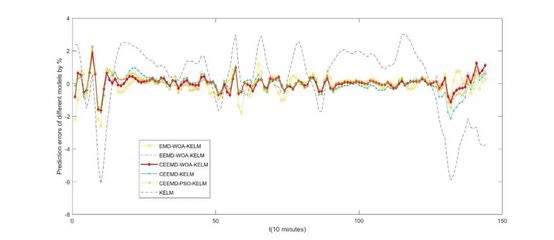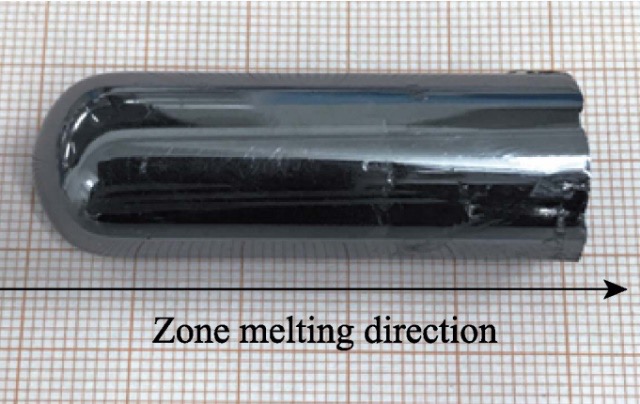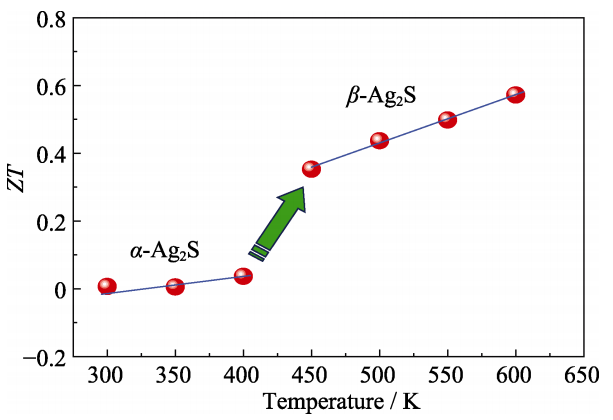Over the past few years, SDJU has rolled out the strategy of school development via pooling talents, building a high-level faculty by external recruitment and internal stimulation with a view to providing a guarantee mechanism to ensure innovative scientific breakthroughs. In spite of the Covid impact in 2022, SDJU teachers have devoted energy to their research, achieving high-standard outcomes as fellows.
Dynamics of double bubbles under the driving of burst ultrasound
Burst ultrasound has found wide applications in industry, medical treatment and so on. For example, it can enhance the energy efficiency of acoustic cavitation in catalyzation and cleaning, and manipulate bubbles for targeted drug delivery.


Radii and positions of bubbles when the ambient radius of bubble 1 takes different values. (a) Radii, (b) Positions.

Positions of bubbles when the time interval between each burst wave is different
Wang Xun’s team from the School of Kaiserslautern Intelligent Manufacturing cooperated with Prof. Chen Weizhong of Nanjing University Institute of Acoustics and jointly studied pulsations and translation of bubbles in a double-bubble system driven by burst ultrasound on the basis of Alexander Doinikov’s model. This study has found the amplitude and the center frequency of burst are closely related to how bubbles pulse and translate.When center frequency approaches resonance frequency, high frequency brings about strong pulsations and fast translations for bubbles. If burst serials are used, shortening the time interval between each burst and improving the acoustic amplitude of bursts are beneficial for the translations of bubbles. As a result, the research theoretically supports the manipulation of bubbles in the fluid.
The paper was recently published in Ultrasonics Sonochemistry.
A short-term wind power prediction model based on CEEMD and WOA-KELM
Effective short-term wind power prediction is crucial to the optimal dispatching, system stability, and operation cost control of a power system.

Final forecasting results based on KELM, EMD-WOA-KELM, EEMD-WOA-KELM, CEEMD-WOA-KELM, CEEMD-KELM and CEEMD-PSO-KELM

The prediction error (%) curves of different methods (KELM, EMD-WOA-KELM, EEMD-WOA-KELM, CEEMD-WOA-KELM, CEEMD-KELM and CEEMD-PSO-KELM)
In order to deal with the intermittent and fluctuating characteristics of the wind power time series signals, Ding Yunfei from the Department of Automation of the School of Electrical Engineering led his team in putting forth a hybrid forecasting model based on Complementary Ensemble Empirical Mode Decomposition (CEEMD) and Whale Optimization Algorithm (WOA)-Kernel Extreme Learning Machine (KELM), to predict short-term wind power. Firstly, the non-stationary wind power time series was decomposed into a series of relatively stationary components by CEEMD. Then, the components were used as the training set for the KELM prediction model, in which the initial values and thresholds were optimized by WOA. Finally, the predicted output values of each component were superimposed, to obtain the final prediction of the wind power values. The experimental results show that the proposed prediction method can reduce the complexity of the prediction with a small reconstruction error. Furthermore, performance is greater, in terms of prediction accuracy and stability, with lower computational costs than other benchmark models.
The paper was recently published in the world-known Renewable Energy.
Microstructure evolution and dynamic mechanical behavior of laser welded dissimilar joint between QP1180 and TRIP780
In recent years, ultrahigh strength steel for NEV bodies based on lightweight structure and lifelong carbon reduction has gained universal attention, nonetheless, its processing causes softening in HAZ during welding.QP1180 and TRIP780 steel plates featuring excellent strength, plasticity, and toughness have become the major structural choice to fabricate cars.
The welding team of the School of Electrical Engineeringinvestigated dissimilar fiber laser joints between QP1180 and TRIP780 steels. The scanning electron microscope (SEM) and electron back-scattered diffraction (EBSD) characterizations were conducted to study the detailed microstructures of each region of the joints. The findings showed that a large volume fraction of tempered martensite (TM) is responsible for the softened zone in the inter-critical heat-affected zone at the QP1180 side of the joints. The digital image correlation (DIC) technique demonstrated that the softened zone triggered by TM in the heat-affected zone (HAZ) at the QP1180 side has little effect on the tensile mechanical properties because of the higher hardness than at the TRIP780 side. The dimples on the fracture surface and higher elongation of the tensile samples show good ductility, which is due to the TRIP effect. The formability of dissimilar weld joints was characterized by the Erichsen cupping test. The Erichsen values varied at different punch pole locations due to the softening zone and non-uniform microstructure on the two sides of HAZ. Therefore, the paper makes a systemic explanation of softening scheme and provides a reference for joint welding on cars to gain better mechanical properties.

EBSD results of the inverse pole figures map of BM-TRIP780 (a), SC-HAZ on TRIP780 side (c), SC-HAZ on QP1180 side (e), and BM-QP1180 (g), and the corresponding phases distributions (b), (d), (f) and (h)
The paper was recently published in the Journal of Materials Research and Technology.
Study on the influence of magnetic field on the performance of lithium-ion batteries (LIB)
LIB is widely used as the power source of electric vehicles (EVs), and its performance is vital for the mileage of EVs, thus greatly impacting the EV industry. Generated by the change of the moving charge or the electric field, the magnetic field (MF) is invisible yet objectively existent. And when acted by an external magnetic field, the internal of a material could magnetize, producing many small magnetic dipoles.
Ruan Guanqiang of the School of Electrical Engineering led his team andexperimented with a method, under magnetic field effect, to test LIB charge and discharge performance, on the basis of which an experimental platform consisting of LIB, a system to test LIB charge-discharge performance, MF generation system was suggested. Then, the experiment method and requirement were presented, and comparative experiments and analyses regarding 18650 LIB were studied.
The paper was published in Energy Reports.
Research on location planning of urban charging stations and battery-swapping stations for electric vehicles
As key supporting facilities for electric vehicles (EVs), charging stations and swapping stations, especially their location planning and availability hold the key to China’s successful shift from conventional energy.

Location and layout planning results
Prof. Sun Lijing of the School of Business led her team and cooperated with Prof. Mike Danilovic’s team from the University of Amsterdam. Their cooperation, a multi-angle research of the new energy industry, pinpoints urban EV charging stations and battery-swapping stations andconsiders fully the influencing factors of user behavioral ability upon the site selection of EV stations with a view to establishing multi-objective functional models, such as the functional model of minimal construction cost and minimal transmission loss, and the functional model of maximal user satisfaction
This article analyzes the model’s average utility coefficient ρ, distance attraction utility coefficient τ, and user rationality λ by using the single-variable control method, dynamic analysis, and optimization of value. The results have shown that distance greatly affects the user’s choice decision, so the distance attractiveness coefficient occupies a larger weight in the comprehensive attractiveness coefficient, and the characteristic attractiveness coefficient occupies a smaller weight. It provides a new perspective for the location planning of urban electric vehicle charging stations and battery-swapping stations.
The result was published in Energy Reports.
Metal sulfide Ag2S: fabrication via zone melting method and its thermoelectric property
Semiconductor thermoelectric material makes direct exchange between thermal and electric energies possible and thus finds widespread application in industrial waste heat, waste heat recovery of vehicle exhaust, space exploration,n and smart wearable devices.
Prof. Jin Min with his team at the School of Materials Science and Engineering grew a new flexible semiconductor material Ag2S using the zone melting method and its thermoelectric (TE) properties were investigated. According to the research, Ag2S has a standard monoclinic P21/c space group (α-Ag2S phase) below 450K and transfers to cubic structure (β-Ag2S phase) over this temperature. Prior to the transference, the electrical conductivity (σ) of α-Ag2S is almost zero. However, the value sharply jumps to ~40000.5 S·m–1 as the material just changes to β-Ag2S at 450K and then gradually decreases to 33256.2 S·m–1 at 650 K. Hall measurement demonstrates that carrier concentration nH of Ag2S is suddenly increased from the level of ~1017 cm–3 to ~1018 cm–3 during phase transition. Total thermal conductivity κ of α-Ag2S is ~0.20 W·m–1·K–1 but is ~0.45 W·m–1·K–1 of β-Ag2S. Ultimately, a maximum ZT=0.57 is achieved around 580 K which means Ag2S might be a promising middle-temperature TE material.


Semiconductor Ag2S by vertical zone melting and its thermoelectric property
The research was published in Journal of Inorganic Materials, T1 journal in integrated material sciences.
A short-term prediction model to forecast power of photovoltaic based on MFA-Elman
PV power generation is greatly influenced by meteorological factors, and its randomness and instability are prominent factors restraining large-scale development of grid-connected PV. Therefore, an urgent problem for the development of PV is improving the reliability of photovoltaic grid-to-grid.
Ma Xinyu, a postgraduate of the School of Business advised by Zhang Xiaohong, proposes a short-term PV power prediction method based on the MFA-Elman neural network by analyzing the problems of low accuracy and reliability as well as slow prediction speed of PV power. The blind randomness of initial weight and threshold in Elman and the slow training speed lead to an unstable convergence process and time-consuming in the course of model training. The simulation results show that the MFA-Elman model has smaller prediction error, higher prediction accuracy, reliability, and faster prediction speed, which can reach the requirements of short-term prediction of PV power. Meanwhile, it provides certain theoretical support to reliable grid-connected PV and then more guarantees for the electric dispatching system.

The research was published in the famous Energy Reports.
(By Office of Science and Technology Administration)






